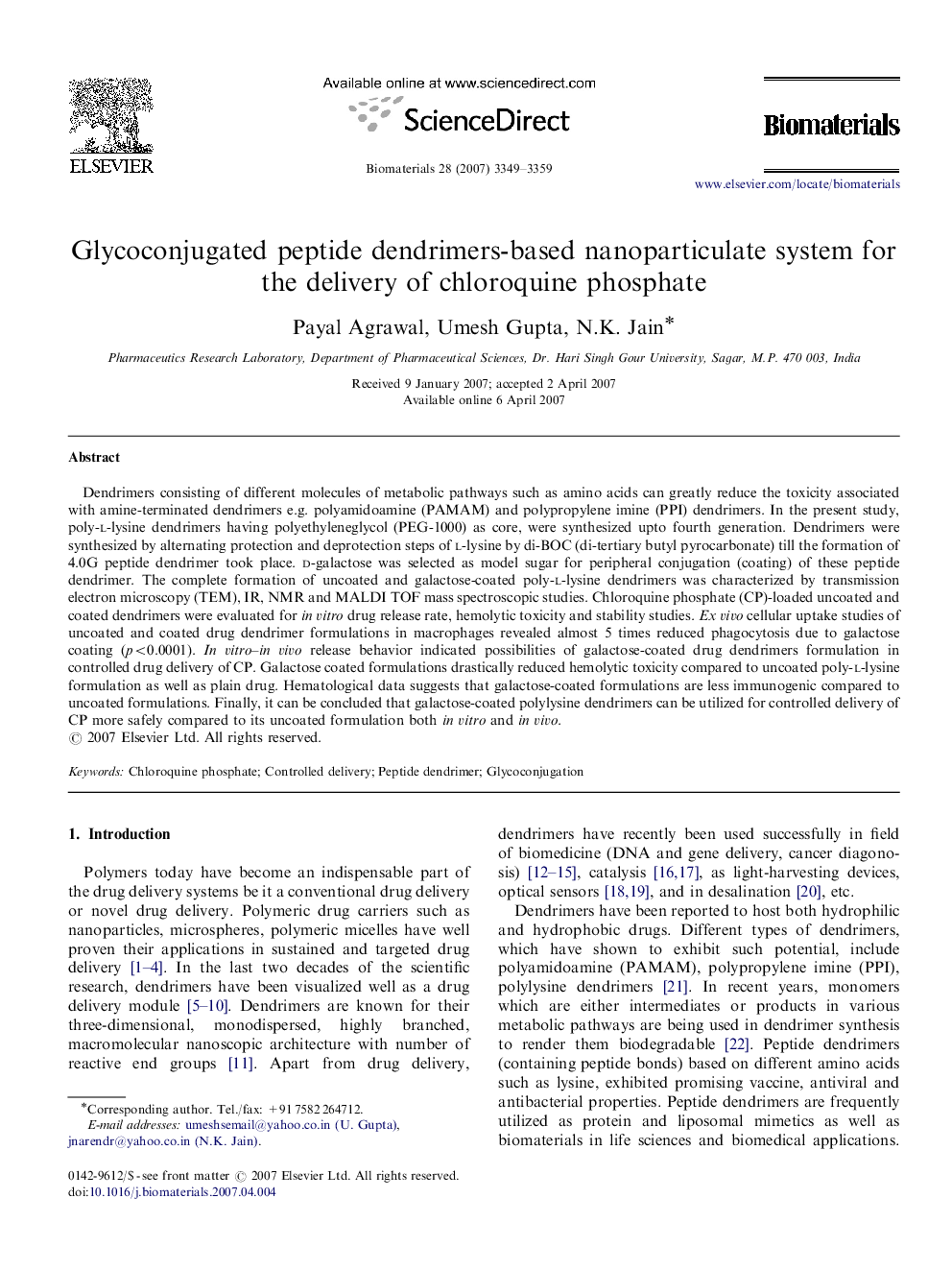| Article ID | Journal | Published Year | Pages | File Type |
|---|---|---|---|---|
| 11425 | Biomaterials | 2007 | 11 Pages |
Dendrimers consisting of different molecules of metabolic pathways such as amino acids can greatly reduce the toxicity associated with amine-terminated dendrimers e.g. polyamidoamine (PAMAM) and polypropylene imine (PPI) dendrimers. In the present study, poly-l-lysine dendrimers having polyethyleneglycol (PEG-1000) as core, were synthesized upto fourth generation. Dendrimers were synthesized by alternating protection and deprotection steps of l-lysine by di-BOC (di-tertiary butyl pyrocarbonate) till the formation of 4.0G peptide dendrimer took place. d-galactose was selected as model sugar for peripheral conjugation (coating) of these peptide dendrimer. The complete formation of uncoated and galactose-coated poly-l-lysine dendrimers was characterized by transmission electron microscopy (TEM), IR, NMR and MALDI TOF mass spectroscopic studies. Chloroquine phosphate (CP)-loaded uncoated and coated dendrimers were evaluated for in vitro drug release rate, hemolytic toxicity and stability studies. Ex vivo cellular uptake studies of uncoated and coated drug dendrimer formulations in macrophages revealed almost 5 times reduced phagocytosis due to galactose coating (p<0.0001). In vitro–in vivo release behavior indicated possibilities of galactose-coated drug dendrimers formulation in controlled drug delivery of CP. Galactose coated formulations drastically reduced hemolytic toxicity compared to uncoated poly-l-lysine formulation as well as plain drug. Hematological data suggests that galactose-coated formulations are less immunogenic compared to uncoated formulations. Finally, it can be concluded that galactose-coated polylysine dendrimers can be utilized for controlled delivery of CP more safely compared to its uncoated formulation both in vitro and in vivo.
